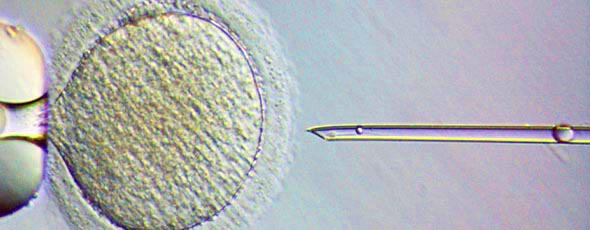 Oakland at the Zoo
Oakland at the Zoo
Behind a wall of glass, amid an upturned branch and pit of sand, a western diamondback slithers around his home at the Pittsburgh Zoo & PPG Aquarium. Pitt Med students peer into its case. On this spring field trip, clinical pharmacology course students will learn about treating venomous snakebites.
But first, it’s feeding time. The rattlesnake opens wide and engulfs a dead rat whole, leaving some spectators wide-eyed and others grimacing. Later, huddled around picnic tables, the students sit with members of the school’s toxicology faculty to discuss snakebite treatments and the numerous molecules swirling within venom.
Joshua Shulman, clinical assistant professor of emergency medicine, is direct with his advice: “Don’t get bit. But if you do get bit, elevate the limb,” he says. “You actually want the venom to spread,” says Joseph Yanta (Res ’13, Fel ’15), assistant professor of emergency medicine.
Bites from larger snakes are less likely to transfer venom than are sbites from smaller snakes, explains Shulman (MD ’12, Res ’15, Fel ’17). So, are those big ones any less frightening? Fourth-year med student Fred Brown might need some convincing: “I’m glad there was glass between me and the snakes.” —Keith Gillogly
Better Predictor of Youth Suicide
Psychiatrists often use a handful of predictors to try to identity risk for suicidal behavior in young people—depressive symptoms, irritability, aggression, impulsivity, and hopelessness are a few listed by Nadine Melhem, associate professor of psychiatry at Pitt. Unfortunately, these predictors have worked only slightly better than a roll of the dice.
Throughout the past 12 years, however, Melhem and her team have developed a new model that puts a stronger focus on variability in depressive symptoms over time. (Learn more in her February 2019 JAMA Psychiatry paper.) After analyzing more than 600 young adults, Melhem says it’s clear that fluctuations in depression are the best predictor for whether or not a young person will go on to attempt suicide.
Melhem says clinicians should shift their thinking from strictly monitoring a current diagnosis to looking at the larger picture over time. What’s important here is that these are symptoms that clinicians are already assessing, or should be assessing,” she says. —Evan Bowen-Gaddy
In 2012, Jan Scheuermann was among the first people to have hundreds of electrodes implanted in their brain to control a robotic arm. She’d been paralyzed for 18 years before volunteering to be a Pitt research subject with technology based on studies from Andy Schwartz’s lab. As she anticipated being part of history, she imagined what she might do with the arm: I could use it to touch my husband’s hand, and to gently touch my children’s cheeks. I envisioned doing just that for several hours before I could fall asleep.
Writer Raffi Khatchadourian captured the parallel journeys of Scheuermann and Schwartz in a Nov. 19 New Yorker story. You should read it. Give yourself some time though; it’s about 13,000 words long. (The audio version clocks in at 1 hour and 24 minutes.)

Monkey See, Monkey Graft
In 2011, Kyle Orwig and his colleagues at the Fertility Preservation Program at UPMC Magee-Womens Hospital started collecting testicular tissue from boys with cancer. They did so with the bold promise that, one day, those children could use the tissue to start a genetic family. Eight years later, Orwig, a PhD professor of obstetrics, gynecology, and reproductive sciences at Pitt, is ready to make good on that promise.
In a study published in the March issue of Science, he and his collaborators announced they successfully produced sperm from cryopreserved testicular tissue removed from juvenile monkeys; the tissue was grafted back at the start of puberty. What’s more, the sperm resulted in a birth, a first for tissue-graft studies.
Thirty percent of boys who undergo chemotherapy will be infertile as adults; and if cancer strikes before puberty, freezing their sperm prior to the procedure isn’t an option. Although ovarian tissue grafting has advanced, previous studies with testicular tissue had lackluster results. “I was surprised by how robust our results were,” Orwig says. He speculates it was because his study used larger tissue samples and less cryoprotectant to preserve the samples.
Orwig’s lab preserves tissue from children’s hospitals nationwide. “Most children’s hospitals don’t have the wherewithal to do what we’re doing,” he says.
The next step is human clinical trials. Talking about fertility with a young patient’s parents is a “delicate discussion,” he says, yet it’s also empowering: “It’s the first time the family can make an informed decision about their future after cure.” —Elizabeth Hoover
Wait, Don’t Wait
Procrastinators rejoice! Actually, hold that thought. Research by Kenneth Smith, professor of medicine and of clinical and translational science at Pitt, tells us that vaccine strength wanes after inoculation. So, is it better to wait until later in the flu season to get that shot?
The answer is a big maybe. Sometimes flu season comes early, and you don’t want to be caught unprepared. Not only that, but any gains from waiting are jeopardized if just 6 percent of the population passes on the vaccine. Really, the world doesn’t need more people forgetting or opting out of vaccinations. Smith says clinicians should give patients the shot whenever they have the chance.
His main concern is maximizing the number of persons who get the flu vaccine. “Delaying is secondary to just getting vaccinated,” he says. —EBG
 Overheard
Overheard
Flight Connections and Elaina Anglin
When Elaina Anglin took the MCAT in 2017, it had been 12 years since she’d graduated from Pitt with a bachelor’s degree in biological sciences. Anglin was so far removed from that coursework, she feared that she’d get a low score and not be accepted anywhere. So she didn’t even tell her friends and family that she was planning on applying to med school until after she had taken the MCAT. Anglin did well. It didn’t hurt that she had experience in the medical field. After graduating from Pitt, she attended the Conemaugh School of Nursing in Johnstown. She worked as an ICU nurse for six years and a flight nurse for Geisinger Life Flight for five. Now Anglin is entering her second year at Pitt Med.
(By the way, Anglin also has a leg up on relieving stress. She has been an equestrian since childhood and used to compete with her horse, Junior. Now the two hit the trails as often as her studies allow.)
So, what ultimately inspired you to apply?
As I started caring for patients, I found that I became more and more interested in truly understanding what was happening in their bodies as they experienced illness and received treatment. It was fascinating how the doctors could make clinical judgments in critically ill patients based on seemingly subtle changes in hemodynamic parameters or vital signs.
What is it like being a flight nurse?
Working in the flight environment is very different from being a nurse in a hospital. Although medical command physicians are always available by radio, cell phone, or satellite phone to provide guidance, the orders that they can give are only as good as the information that is relayed to them by the flight crew. While I was still in orientation, on one of my first flights, we picked up an 8-year-old child with a significant traumatic head injury who was unresponsive. She had been struck by a car while riding her bike. I was getting the full realization at that point that I was no longer the one calling for help in an emergency; I was one of the people showing up to provide it.
Did your experience as a flight nurse make the first year of med school easier?
My background as a nurse and my experience have definitely helped me in the first year. Flight nursing requires a functional level of knowledge of a wide variety of things, so although I’m needing to learn things at a higher level and in a lot more detail now that I’m in medical school, it’s very useful to be able to relate what I’m learning back to things that I’ve observed before in actual patients. —Kate Benz
Next Generation
In 2013, the close-knit Pitt Med Class of 1972 created a fund to help offset the costs of student-directed research. Since then, these alumni have raised more than $106,000 to help students with their projects. These recently supported projects impressed the committee with the intellectual curiosity demonstrated:
Matt Swatski, who is entering his fourth year, researches the relationship between genetics, diabetes, and obesity. Swatski is mentored by Erin Kershaw, chief of the Division of Endocrinology and Metabolism. His project focuses on a variant gene that is present in Samoans and helps to regulate cellular respiration, glucose homeostasis, and the synthesis of lipids. He plans to use the gene-editor CRISPR-Cas9 on mouse models to attempt to explain how the variant influences cellular nutrition. “Understanding these mechanisms could lead to better treatments for diabetes and obesity,” Swatski says.
Brett Curtis studies how markers related to mitochondria also relate to delirium in ICU patients. He is a third-year student mentored by Timothy Girard, associate professor of critical care medicine. His project analyzes participants who suffered from delirium because of respiratory failure and sepsis. “There is a significant lack of knowledge of how inflammation affecting mitochondria is associated with delirium in critical illness,” Curtis says.
Sheri Wang’s project centers on lymphedema, an incurable disease where an excess of lymphatic fluid in the skin causes swelling, usually in arms and legs. Close to 10 million Americans suffer from lymphedema, and Wang, who is entering her fourth year, says she was drawn to the disease because its exact progression is not well understood. Her project mentors are the Department of Plastic Surgery’s J. Peter Rubin, UPMC Endowed Professor and chair, and Lauren Kokai, research assistant professor. Wang’s project engineers lymphatic channels and studies cellular signaling in certain lymphatic cells.
“Ultimately, we would like to grow viable lymphatic channels as a therapy,” she says. —KB
 Representation Starts Here
Representation Starts Here
Approximately half of medical school graduates are women; yet according to a 2016 American College of Cardiology survey, fewer than 20 percent of cardiologists are women. To help give this field better gender representation, Katie Berlacher (Res ’08, Fel ’12), assistant professor of medicine and director of the Cardiology Fellowship Program, collaborated with Fit Education Consulting to launch She Looks Like a Cardiologist. The inaugural event, held in January, brought together girls from Pittsburgh-area high schools and cardiology residents, fellows, and physicians from Pitt Med and UPMC who are women. Each student in attendance was paired with a mentor, and during the morning-long event, the girls learned about the medical school application process and the importance of cardiology.
“Men and women get heart disease equally; it’s not like breast cancer,” says Berlacher. “The people who are treating it should represent that.” Berlacher is planning a similar event to be held this year called I Look Like a Cardiologist which will address racial misrepresentation in the field. —Gavin Jenkins
Footnote
Picked up the phone and it was someone from Hollywood—not too many scientists can tell a story that starts like that. But Pitt’s Eric Lagasse gets to. In 2018, a consultant for Grey’s Anatomy, one of the longest-running shows in television history, called Lagasse to talk about his research. In 2012, Lagasse discovered that when hepatocytes, cells thats make up as much as 85 percent of a liver, are introduced into lymph nodes of mice and pigs with liver disease, the nodes act as tiny bioreactors that incubate the growth of functional liver mass. (Lymph nodes are important for the immune system but have little to do with livers as far as we know.) The research was incorporated into one of the show’s storylines, and that felt surreal for Lagasse.
He visited his cousins in France last year, and they were impressed: “That’s when I shot to stardom, at least in their eyes,” he says.
They’re In
The country’s most prestigious societies for physician-scientists have announced their newest members.
Rachel Berger, MD/MPH and professor of pediatrics and of clinical and translational science, was inducted recently into the American Society for Clinical Investigation (ASCI). Brian Primack, MD/PhD and Bernice L. and Morton S. Lerner Professor, joined Berger in this year’s class of ASCI inductees. Berger, who also serves as chief of the Child Advocacy Center at UPMC Children’s Hospital of Pittsburgh, became the first pediatrician specializing in child abuse to be inducted into the ASCI since its founding in 1908. “It is a huge honor for me and for the field of child abuse pediatrics,” she says.
George Gittes, the Benjamin R. Fisher Professor in Pediatric Surgery and director of the Richard King Mellon Foundation Institute for Pediatric Research, was one of four faculty members selected to enter the Association of American Physicians (AAP). Gittes was inducted into the AAP alongside Elizabeth Miller, professor of pediatrics and chief of the Division of Adolescent and Young Adult Medicine at UPMC Children’s Hospital of Pittsburgh; Alison Morris, UPMC Professor in Translational Pulmonary and Critical Care Medicine; and Warren Shlomchik, professor of medicine and immunology and director of Hematopoietic Stem Cell Transplantation and Cell Therapy. —EH
 Oakland at the Zoo
Oakland at the Zoo 
 Overheard
Overheard  Representation Starts Here
Representation Starts Here
